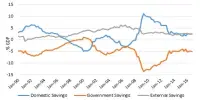Community of Interest
It refers to a group of persons having stakes or interests in something. It is a common grievance, interest, or other similarities among a group of people that justifies treating them as a class for legal purposes. It is a community of people who share a common interest or passion. When the business policy of several companies is controlled by a group of common shareholders, or directors without any formal central administration, a community of interest is formed. It is a group of people operating within or in association with a client, customer, sponsor, for the purpose of furthering a common cause by sharing knowledge, information, or data, and interactively pursuing informed courses of action. They are groups of people who want to learn about a particular topic, or who are passionate about one. An example is all people who have an interest in photography.
Communities of Interest are typically narrower in scope and tend to have a specific focus such as information exchange. It is described as a network of people who share the same interests, knowledge, and understanding of the best practices for any given subject matter. Membership of a Community of Interest is a great way to make the most of virtual networking; communicating with members from a particular area of the career development sector, or with particular interests or specialisms, to share ideas, resources, examples of good practice, etc. They make no commitment to deliver something together. The motivation is to stay current on the topic and to be able to ask and answer questions about it. Examples of communities of interest include ethnic, racial, and economic groups.
However, the following factors also indicate a community of interests:
- The similarity in skills, interests, duties, and working conditions;
- Functional integration of the plant, including interchange and contact among the employees;
- The employer’s organizational and supervisory structure;
- The bargaining history; and
- The extent of union organization among the employees.
















